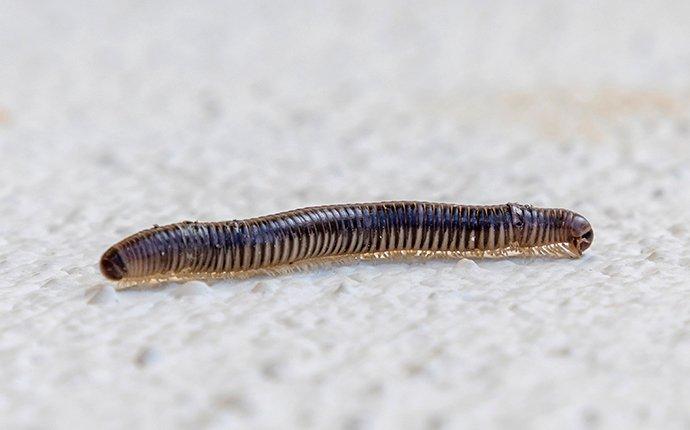As we enjoy the changing seasons here in Houston, pests are also sensitive to what they consider as less than favorable conditions. Particularly, when the weather becomes too dry or too wet, millipedes will retreat from the outdoors and make their way into your home where they can find comfortable living conditions that suit their needs. Therefore, its important to know how to identify millipedes, as well as the preventative measures necessary to keep them from infesting your Houston home.
Millipedes vs. Centipedes
Despite their similar looks and similar-sounding names, millipedes are not centipedes, and as such, they need to be tended to accordingly. That’s why it’s important to be able to identify which is which and the threats each pose.
Millipedes generally grow to between 1/2 and 1 1/2 inches in length. They are usually dark grey, brown, or black in color, though some species are red or orange. They have segmented bodies with two pairs of legs per segment.
Centipedes, on the other hand, have one set of legs per segment. Their relatively large claw-like limbs contain venom glands, and they have reddish-brown, flat bodies.
Do Centipedes And Millipedes Bite?
Both millipedes and centipedes are known to bite if handled which is why you should exercise caution with both of these species. However, while centipedes are venomous, millipedes are not. Also, a bite from a millipede is extremely rare. However, if you are bitten by a millipede it will likely hurt about as much as a bee sting.
In addition, some millipedes can emit an acidic fluid with a foul odor that can be an irritant if it comes in contact with your skin. Still, while millipedes do not pose the same threats as centipedes, they are unsightly, and you should not have to deal with them living in your home.
What Causes Millipedes To Enter Your Home?
Millipedes are driven indoors when the weather outside becomes inhospitable to them. That usually means when the weather becomes too wet or too dry for them. Given Houston’s propensity for rain, this can be much of the year. That’s why it’s important for you to take some preventative measures to ensure your home is less appealing to millipedes.
How Can You Prevent Millipede Infestations?
Millipedes tend to seek out areas that are abundant in their desired food source. Mostly, they feed on organic, decaying material such as rotting wood, leaves, grass clippings. That makes woodpiles, gardens, and greenhouses prime locations for millipede infestations.
With this in mind, the best ways to prevent millipede infestations is to maintain your yard and inspect the exterior of your home.
- Store wood piles away from the outside of your house.
- Seal trash cans stored both outside and inside.
- Cut your grass short and remove grass clippings.
- Rake or leaf-blow your lawn.
- Trim landscaping that may be directly adjacent to your home.
- Inspect door frames, windows, and your foundations for any small cracks that may allow millipedes to get inside. Seal them with caulking.
Following these preventive measures should greatly cut down on the chances of millipede activity in your home. However, in spite of your best efforts to avoid a millipede infestation, you may still find these unwanted pests inside of your home.
What Should You Do if You Have a Millipede Infestation?
When it comes to completely eliminating millipedes from your home, there’s really no alternative to calling the professionals. That’s why Romney Pest Control is the go-to service for homeowners throughout the Houston area.
With Romney Pest Control, a trained pest professional will come to your house to help you eliminate current infestations. They will also inspect your property and seal up possible entry points and eliminate other millipede attractants.
If you are dealing with a millipede infestation, call Romney Pest Control today.




